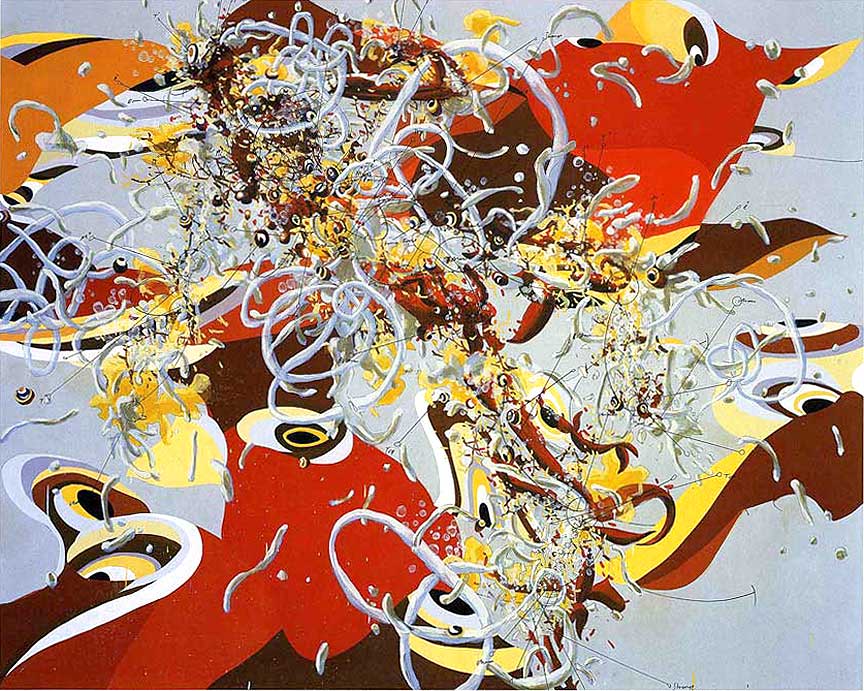Abstract
"Wherever we have spoken openly we have (actually) said nothing. But where we have written something in code and in pictures we have concealed the truth."
-The Rosarium Philosophorum
Alchemy is the art of transformation. It is an art that its adherents mistook for science, and that is what doomed them to obscurity when science shook off its mysticism. But if alchemy were art mistaken for science, then today, most digital media is technology masquerading as art. Philip K. Dick defined art as "creative work, directed towards
the service of an internal standard." The question becomes, then, what are the internal standards towards which an electronic hyperaesthetic should strive?
These standards are most assuredly not those of science, for there is no reason for art to aspire to verifiability (which is the crux of the scientific method). Instead, and in a roundabout way, the digital arts may look back, reinvigorating alchemy's arcane approach to the image. The Great Work, as alchemists referred to their practice, had a powerful visual tradition. Alchemists imbued their complex pictures with information - their illustrations of kilns and dragons, elixirs and kings were redolent with gnosis.
Lunenfeld�s talk constructs a lineage of the alchemical imaginary in the media arts, running from the mystical animations of avant-garde filmmaker Harry Smith in the 1950s to contemporary work like the light and color video projections of Diana Thater, the cartographic Web sites of painter Matthew Ritchie and the phantasmagorically over-coded Cremaster films of artist Matthew Barney. Alchemists danced between the danger of knowledge and the promise of power: they coded a grail of transcendence. Artists who engage with digital media, then, should not play into industry's inevitable cycles of upgrades and technological improvements in the hopes of attaining an ever more subtly nuanced realism; the internal standards of electronic arts should be more coded. Transcendence, if it is even possible, demands the acquisition of oblique knowledge and pleasures more subtle than that of recognition.
Bio
Peter Lunenfeld teaches in the Graduate Program in Communication & New Media Design at Art Center College of Design. Founder of �mediawork: The Southern California New Media Working Group and Director of the Institute for Technology & Aesthetics (ITA)�, Lunenfeld is producing "SCRIPTED SPACES: An ITA Conference on Entertainment Design, Narrative Architecture, and Virtual Environments," at Art Center, April 17-19, 1998 <www.artcenter.edu/scriptedspaces.html>. He is a member of the editorial board of the international journal art/text, for which he guest edited a special issue on "art/tech" in 1997. He has published widely in Afterimage, Flash Art, The Journal of Film and Video, Film Quarterly and Artforum and is the editor of The Digital Dialectic: New Essays on New Media, forthcoming from the MIT Press.
-- As of 3/11/98
Updated Bio
Peter Lunenfeld is a professor in the graduate Media Design Program at Art Center College of Design. His books include USER, Snap to Grid, and The Digital Dialectic. He is the editorial director of the Mediawork Series for the MIT Press.
-- As of 1/4/07
